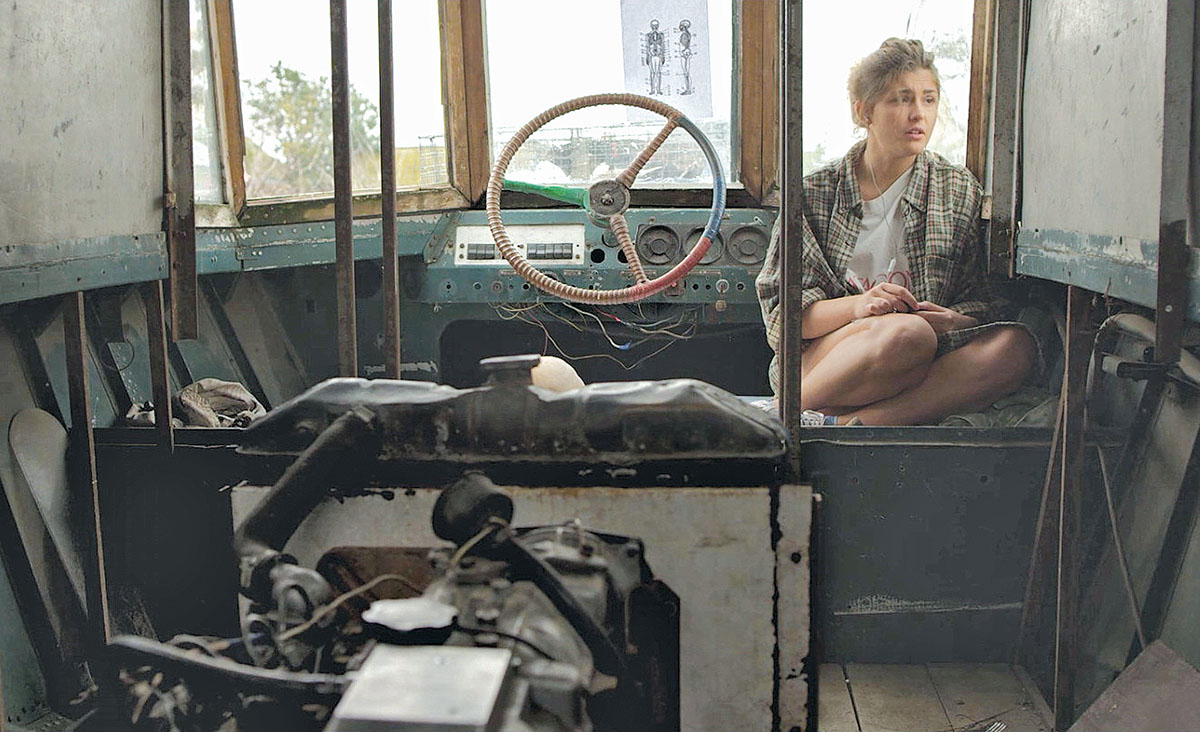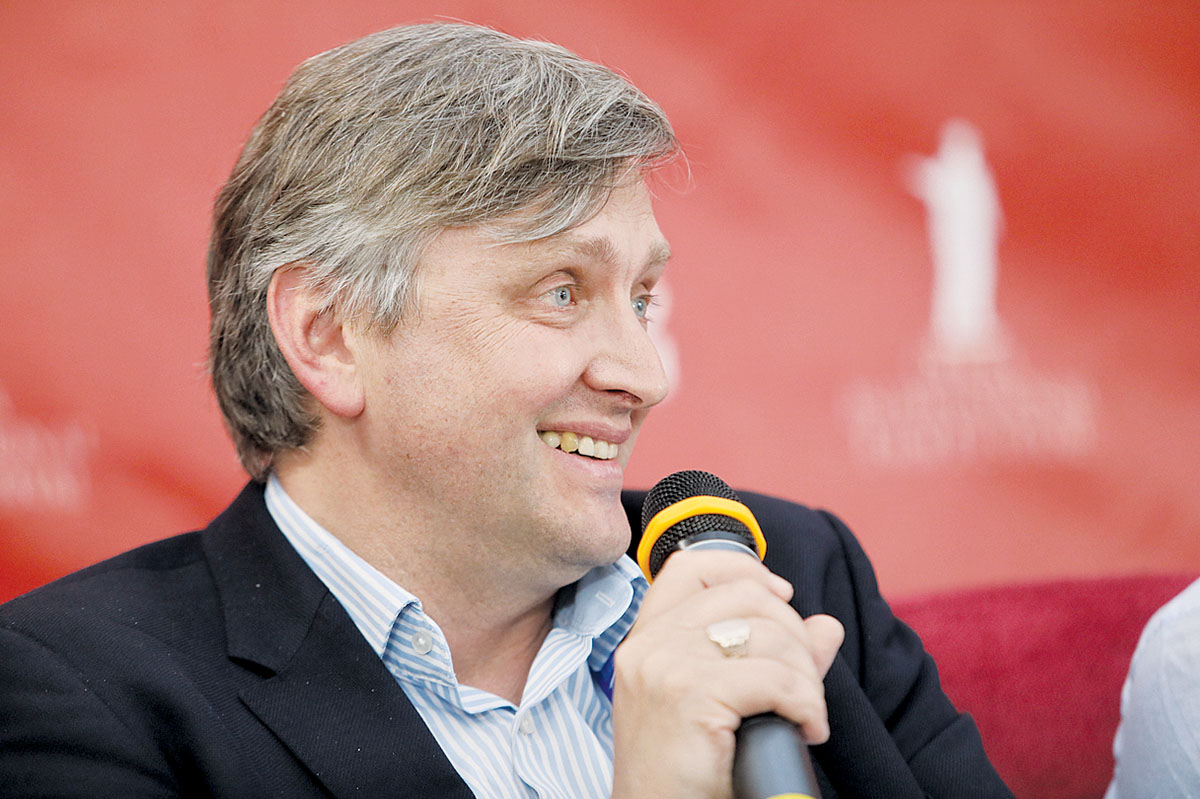The 27th year of Ukraine’s independence has been another good one for the arts in the country. There has been an abundance of new Ukrainian music, film and visual art, including music bands Yuko and Tik Tu, the movies “The Stronghold” and “When the Trees Fall,” photography by Irynka Hromotska and animation by Sashko Danylenko — to name just a few examples.
The Kyiv Post has been covering many of these cultural developments, but especially Ukraine’s achievements on the international level. Here is a selection of the country’s most significant creative advances in the last year.
Ads, design and music videos
The Eurovision Song Contest 2017, which Ukraine hosted in May 2017, did not bring it a musical victory, but later bore some fruit for the country’s design industry. On June 19, Ukraine’s Banda advertising agency and Republique design studio earned professional acclaim for their Eurovision rebranding by winning a Bronze Lion award in the design category at the prestigious Cannes Lions International Creative Festival.
anda and Republique’s designs featured a logo made up of a series of circles, each with a different pattern, strung together in the form of a traditional Ukrainian necklace. The slogan that accompanied the logo called on viewers to “Celebrate Diversity.”
The necklace also symbolized the different Eurovision competitors who had been brought together by the contest. The designers chose traditional Ukrainian colors, red and black, for the branding.
Banda also won a Red Dot design award for its corporate logo for Eurovision in 2017, and this year repeated its success with another Red Dot award for the corporate design of the “Ukraine Now” national brand.
The Ukrainian government commissioned Banda to design the national brand. It consists of a logo and motto “Ukraine Now.” The designs are used on billboards, flyers, and video ads.
Banda advertising agency wanted to change Ukraine’s image, which is often associated with “corruption, revolution, and military actions,” Banda’s website says. The agency said it aimed to create a brand for Ukraine in the world, attracting investments and improving tourism potential.
Ukraine has also seen an abundance of commercials and music videos being filmed in the country this year, especially in Kyiv. This has been a trend since 2016, with foreign artists and companies being attracted by Kyiv’s unusual cityscapes and low production prices.

Roman Bondarchuk’s feature movie debut “Volcano” has won the Golden Apricot prize at the 15th Film Festival in Yerevan, Armenia. (Courtesy)
However, low prices do not necessarily mean bad quality. In the four years that the Ukrainian film crews and producers stopped orienting toward Russian clients, many of them have learned to adjust to the more rigorous demands of Western clients.
One particularly successful studio is Radioactive Film. They have taken part in filming ads and music videos that in total have received one gold, two silver and two bronze awards at the aforementioned Cannes Lions 2017. These were ads for Nike and Volkswagen, and music videos for Coldplay and DJ Shadow.
Literature and illustration
This year Ukrainian literature reached a new, German-language market, with Ukrainian writer Tetiana Maliarchuk winning a prestigious German-language literary award — the Ingeborg-Bachmann-Preis — for her debut short story in German.
Maliarchuk read a non-published short story “Frogs in the Sea” to a seven-member jury and the public, including 300,000 people listening to a live broadcast. She competed in the final round with 13 other writers at the Festival of German-Language Literature in Klagenfurt.
According to the award’s website, in her story, Maliarchuk “discusses the younger generation’s loss of interest in their elder relatives, intertwining it with the issues of social inequality, humans’ separation from nature, and xenophobia.”
Maliarchuk has been writing in German since 2014, but mainly for newspapers. “Frogs in the Sea” is her first fiction short story written in German. Previously she had her Ukrainian works translated into German, as well as into English, Belarusian, Polish, Romanian, Russian, and Czech. She was born in Ivano-Frankivsk but has lived in Austria since 2011.
Another win for Ukrainian literature this year was brought by the Ukrainian illustrators Andrii Lesiv and Romana Romanyshyn, the founders of Agrafka studio in Lviv. For the third time in the last five years, they have received a BolognaRagazzi Award, a major international prize for children’s books.
Their books “Loudly Softly in a Whisper” and “I See That” won awards for illustration in the non-fiction category. The books explain the human senses of hearing and seeing to the youngest audiences.
Film
Ukrainian documentary filmmakers have continued expanding into feature film directing this year, with great success. The Belarus-born Ukrainian director Sergei Loznitsa won the best director prize in the Cannes film festival’s Un Certain Regard competition for his film “Donbas,” a drama about Russia’s war in eastern Ukraine.
The Un Certain Regard section of the Cannes translates as “a certain glance” and features more edgy films that tell stories in non-traditional ways.
Loznitsa’s film definitely fits the bill: it consists of 13 vignettes that tell different stories about the life on the frontline and the occupied territories of the Donbas. Taken together, they provide a picture of what is happening in the region during the occupation.
Loznitsa’ version of the Donbas seems grotesque and absurd, and yet the documentary-trained director tries to be honest in his depiction. The inspiration and the material for the stories came from real life videos shot in the occupied territories that Loznitsa saw on the internet.
“What impressed me was that, on the one hand, it looked like a carnival, a bad comedy. On the other, it was a tragic story, and people suffered,” Loznitsa told the media after the movie’s premiere in Odesa.

Ukrainian film director Sergei Loznitsa speaks at the press conference about his movie “Donbass,” during the 9th Odesa International Film Festival on July 16. (Volodymyr Petrov)
Another Ukrainian documentary filmmaker turned feature film director is Roman Bondarchuk. His feature debut “Volcano” won the Golden Apricot prize at the Film Festival in Yerevan, Armenia this year. It was named the best live-action film of the festival.
“Volcano” tells the story of an OSCE interpreter Lucas on a monitoring mission to Crimea, whose car disappears in Kherson region. He finds himself stranded near a remote village in the southern Ukrainian steppe. Discovering the mysterious and somewhat chaotic lifestyle of the locals, Lucas is forced to adapt and revaluate his life.
In many ways the success of “Volcano” reflects the appeal of other Ukrainian cultural projects. They can be low budget, and yet they are creatively impressive — all thanks to the input of the artists behind them. They also feature a determination to express what is unique about Ukraine, thus giving them the originality that catches the eye and interests the mind.
